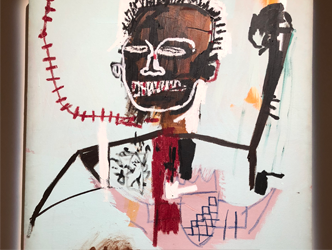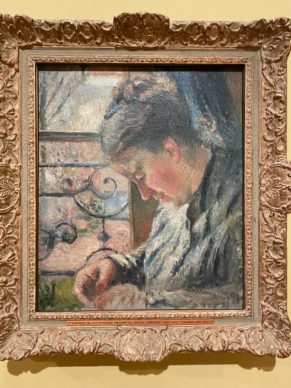
Camille Pissarro
Changing mind
A good exhibition is one that enables you to change your mind about an artist.
Pissarro

Camille Pissarro
There are all sorts of reasons why this should happen at the show staged by the Kunstmuseum in Basel dedicated to Camille Pissarro (1830-1903). The impressionist master lives on in collective memory through a large number of rather formulaic and verdant landscapes, animated by quaint rural figures, but in Basel it is demonstrated, the proof being in the paintings themselves, that Pissarro was a key figure in the impressionist and post-impressionist period.
Anarchist, cosmopolitan, and self-taught
The roll call of those he influenced is stunning, from Paul Cézanne to Edgar Degas via Georges Seurat and Claude Monet. Pissarro is an atypical figure: anarchist, cosmopolitan, and self-taught.
In Paris
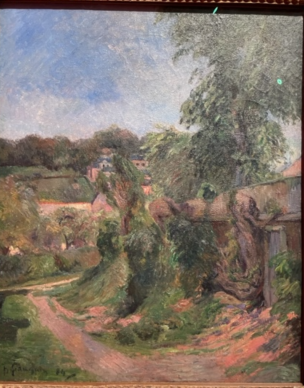
Camille Pissarro
The son of a Jewish dealer based in the Caribbean, he was born a Danish citizen on the island of St Thomas. In the early 1860s he met a group of young artists in Paris. This was the start of the great history of impressionism.
Josef Helfenstein
“Pissarro had a gift for friendship,” explains the museum director and curator of the exhibition, Josef Helfenstein.
Monet
So it would seem it was Pissarro who introduced Claude Monet to the practice of painting “sur le motif”, out in nature. He wanted to allow his brushstrokes to be seen in order to translate his sensations, and shared this watchword with the man who remained his friend until the end.

C Pissarro, P Cézanne
Cézanne

Paul Cézanne
He was also exceptionally close to Cézanne. Between 1872 and 1881 the pair would regularly paint side by side, between Pontoise and Auvers-sur-Oise. “Old Pissarro, he was like a father to me. He was a man you turned to for advice and something like God himself,” Cézanne would later say.
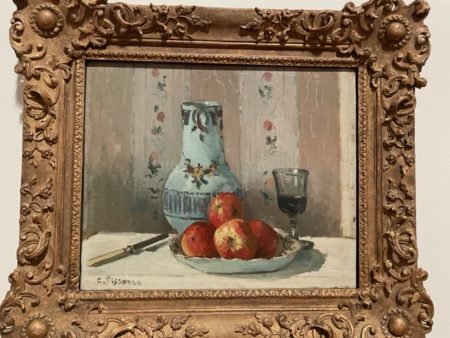
Camille Pissarro
Georges Seurat
In order to make these parallel creative mechanisms understood, the organizers have assembled paintings on the same themes and from the same dates by Cézanne and Pissarro. The latter, however, demonstrates a technical approach that is clearly more classical. It was also Pissarro who introduced to his dealer, Paul Durand-Ruel, the post-impressionist artistic genius Georges Seurat.
Divisionist
In 1885 Pissarro was already a confirmed impressionist, but he didn’t hesitate to follow the precepts of the “divisionist” painters, who were the same age as his children. On canvas he separated colours into little dots. It is this dynamic conception of his visual endeavour that drove him again, four years later, to return to his former method. He was permanently calling everything into question.
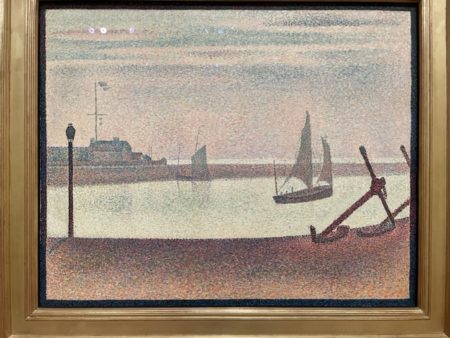
Georges Seurat
Monster
He wrote to his son in 1883: “I’ve just finished my series of paintings. I sometimes have a horrible fear of turning up a canvas of mine. I’m always afraid of finding a monster in place of the precious jewels I thought I had put there.”
Pissarro ego
Perhaps Pissarro’s ego wasn’t strong enough to ensure him greater commercial and artistic success.
Paul Signac
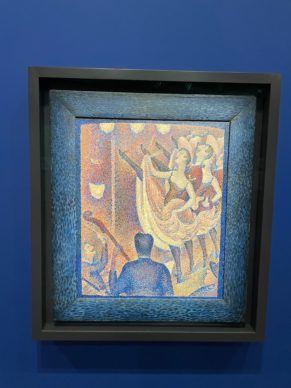
Georges Seurat
In terms of his aesthetic friendships, Camille Pissarro frequented another post-impressionist and another great accomplice of Seurat: Paul Signac (1863-1935).
Art historian
The latter, according to him, seemed to have the ambition to be a sort of art historian. To this end he assembled a group of works around him which were there to illustrate his theories of art, then in the process of being developed.
Charlotte Hellman
The Musée d’Orsay is dedicating a stunning exhibition to the painter, not as an artist but rather as a collector, until 13 February. Charlotte Hellman, the co-curator of the exhibition who oversees the Signac archives and is a descendent of Signac, explains: “He came from a bourgeois family and enjoyed a certain level of material comfort.
Eye of a historian

Georges Seurat
His eye is that of a historian who wants to show, through his acquisitions, that there exists a kind of progression in art.” So he believed that fauvism had its roots in post-impressionism. For the display we find at the Orsay, it is shown right next to a post-impressionist painting by Edmond Cross, “L’air du soir”, from 1894 beside a Matisse from the same period, the famous “Luxe Calme et volupté”, close to a fauvist canvas by Valtat from 1904, “Femmes au bord de la mer”.
Vincent Van Gogh

Vincent Van Gogh
The painting by Vincent Van Gogh, “Deux harengs”, with its yellow tones, is a souvenir from the visit the Parisian paid to his Dutch friend in Arles.
Portrait of a transvestite
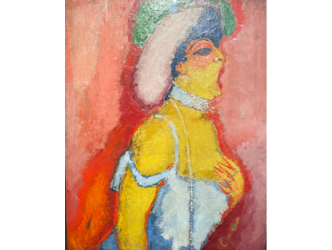
Kees Van Dongen
He bought two exceptional paintings by Kees Van Dongen, including the multicoloured portrait of a transvestite, which seems to foreshadow Andy Warhol’s series “Ladies and Gentlemen”.
Georges Seurat

Georges Seurat
But most significantly Signac would go on to possess no less than 80 paintings and drawings by Georges Seurat. At the Orsay, 38 of his works occupy an entire room. They met in 1884 and their artistic conceptions were turned upside down. After Seurat died at the age of 32, not only did he continue to paint like his comrade in a “pointillist” way, he also made sure that one of Seurat’s masterpieces, “Le Cirque” from 1891, entered the collections at the Louvre.
Rare
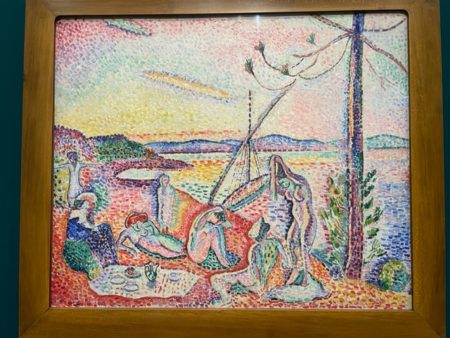
Henri Matisse
Here, too, Signac knew how to hold back his artist’s ego to honour the talents of his contemporaries. That in itself is rare enough to merit an exhibition.
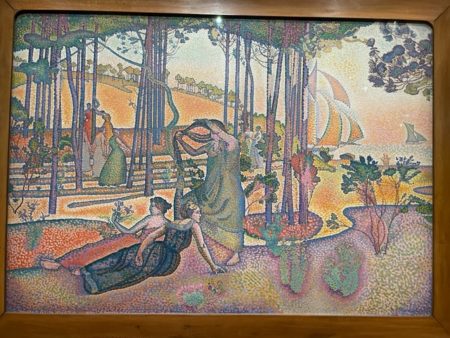
Henri-Edmond Cross
Camille Pissarro : l’atelier modern (Camille Pissarro: the studio of modernism). Until 23 January. Kunstmuseum. Basel. https://kunstmuseumbasel.ch/fr/
Signac collectionneur. Until 13 February. Musée d’Orsay. www.musee-orsay.fr/fr/expositions/signac-collectionneur-423
Donating=Supporting

Support independent news on art.
Your contribution : Make a monthly commitment to support JB Reports or a one off contribution as and when you feel like it. Choose the option that suits you best.
Need to cancel a recurring donation? Please go here.
The donation is considered to be a subscription for a fee set by the donor and for a duration also set by the donor.


